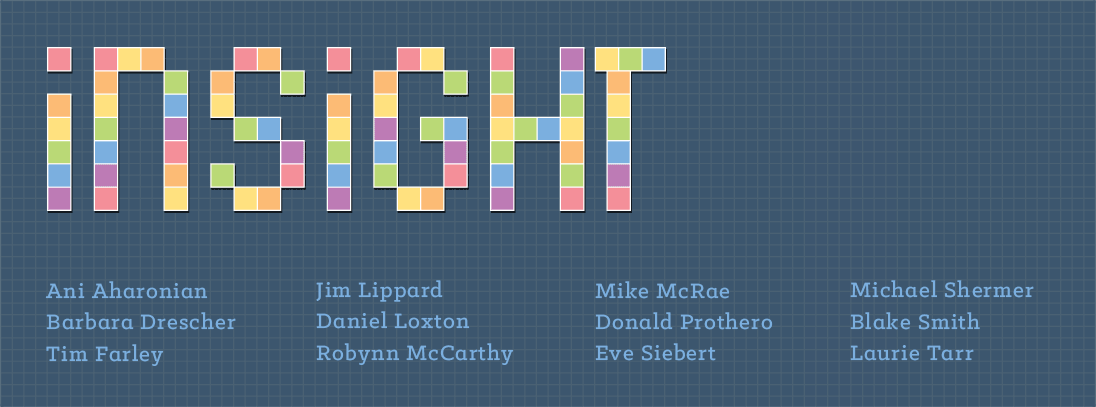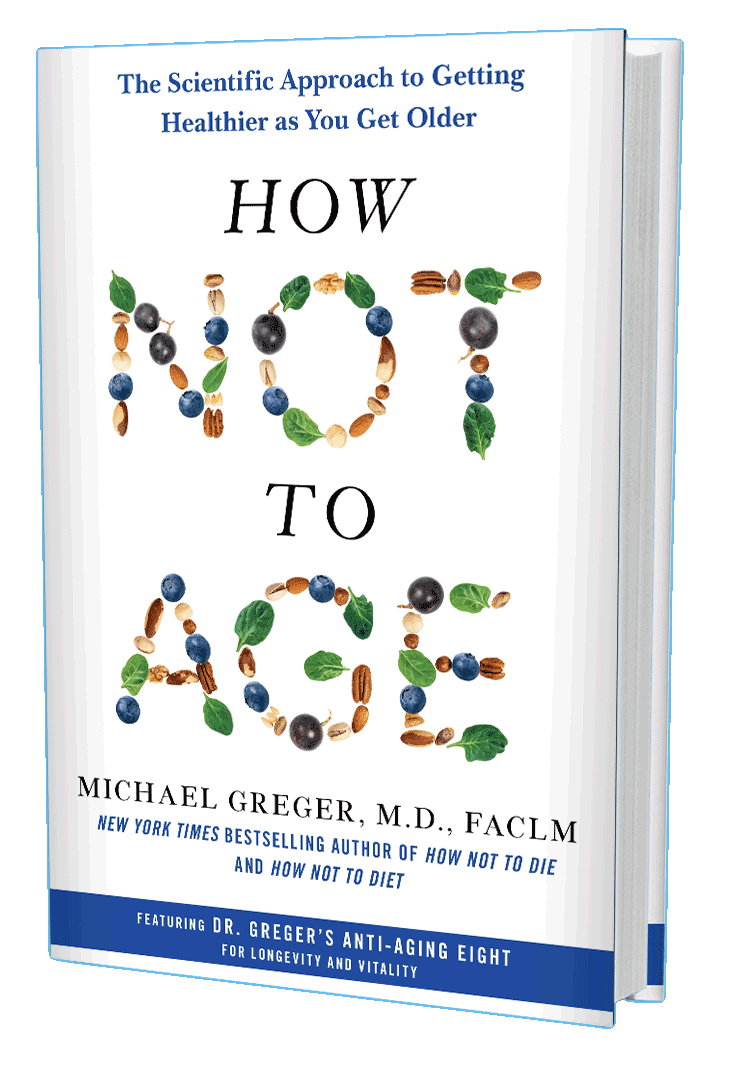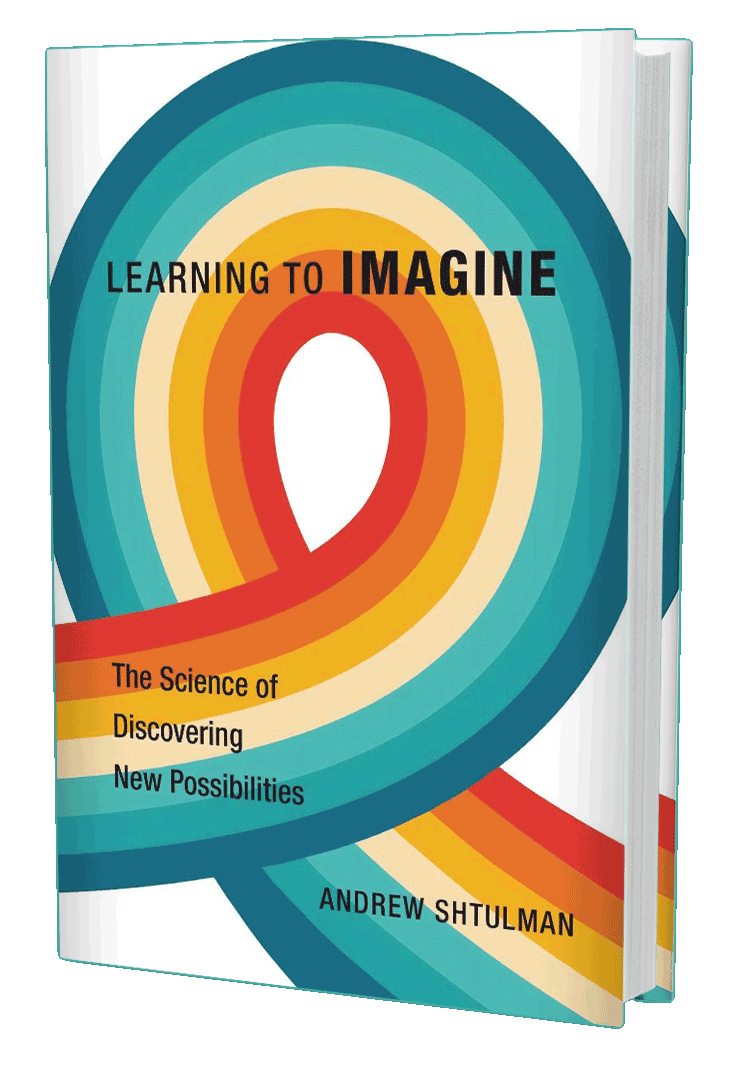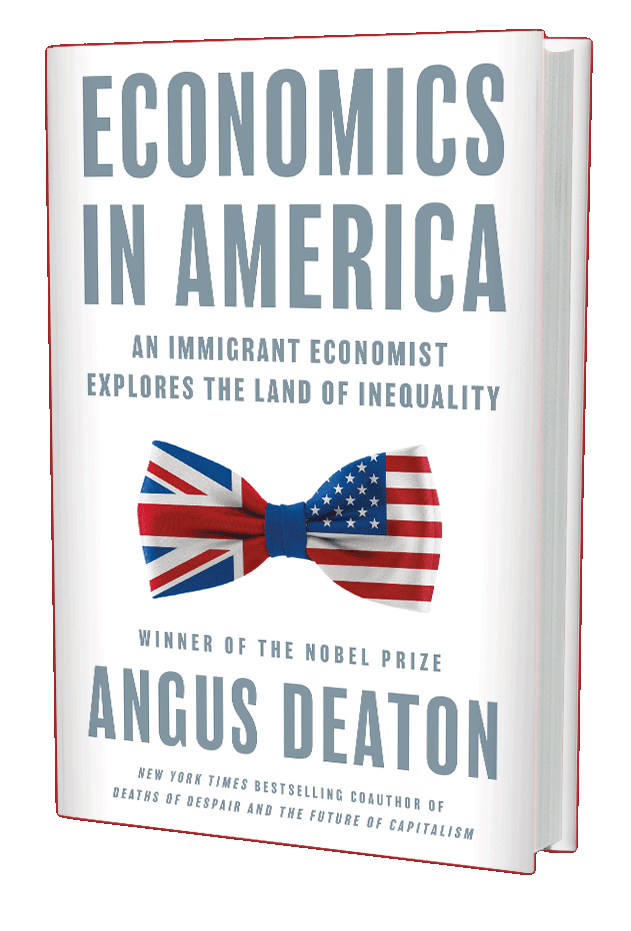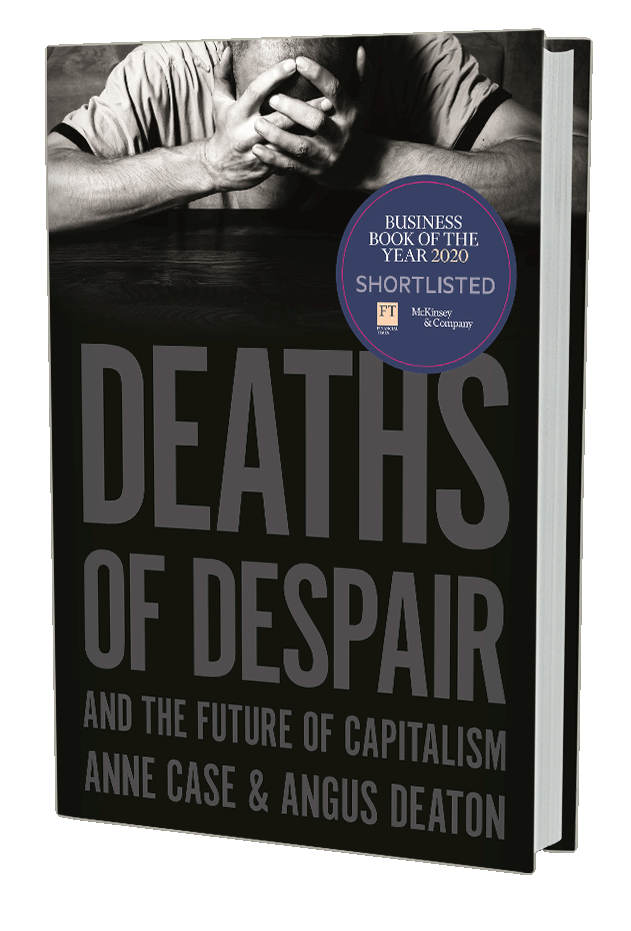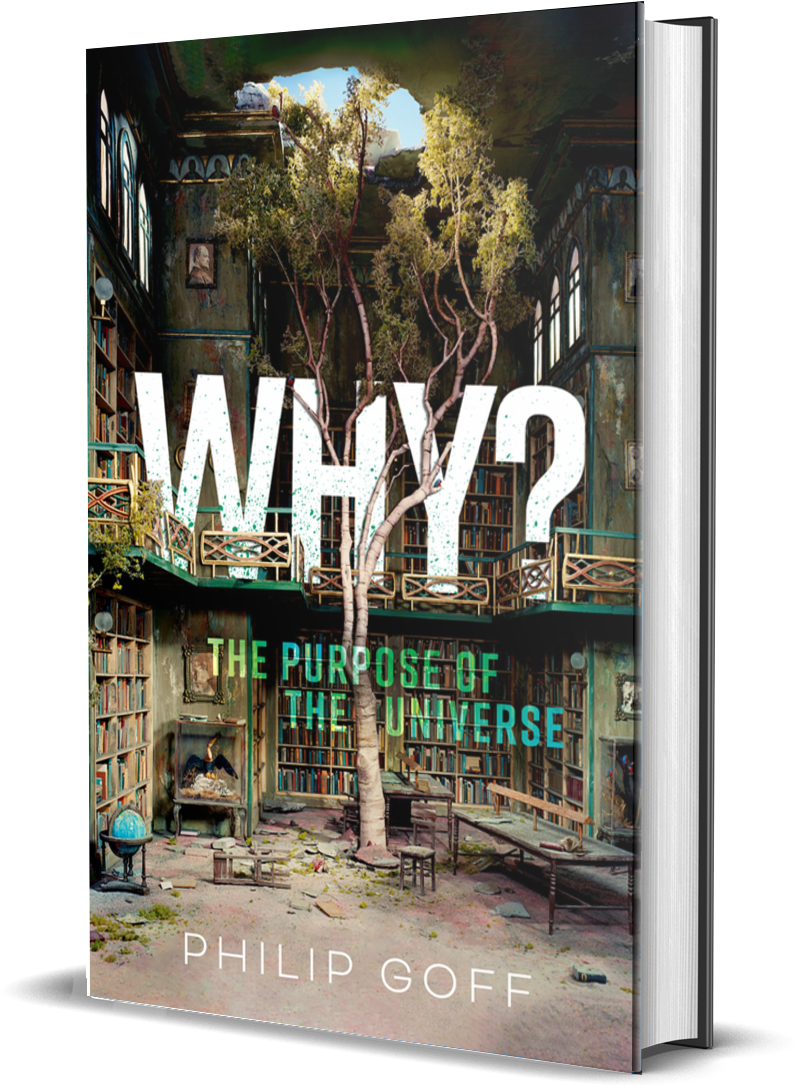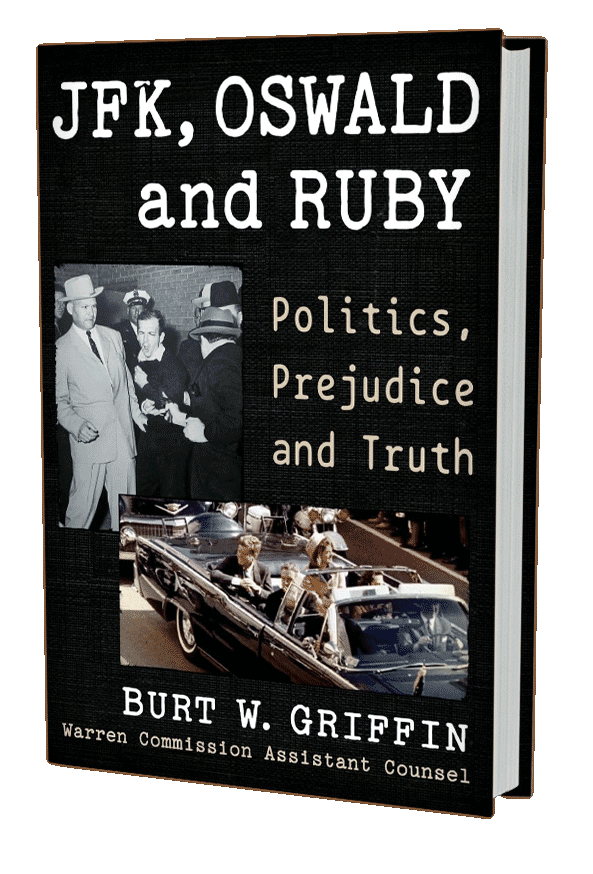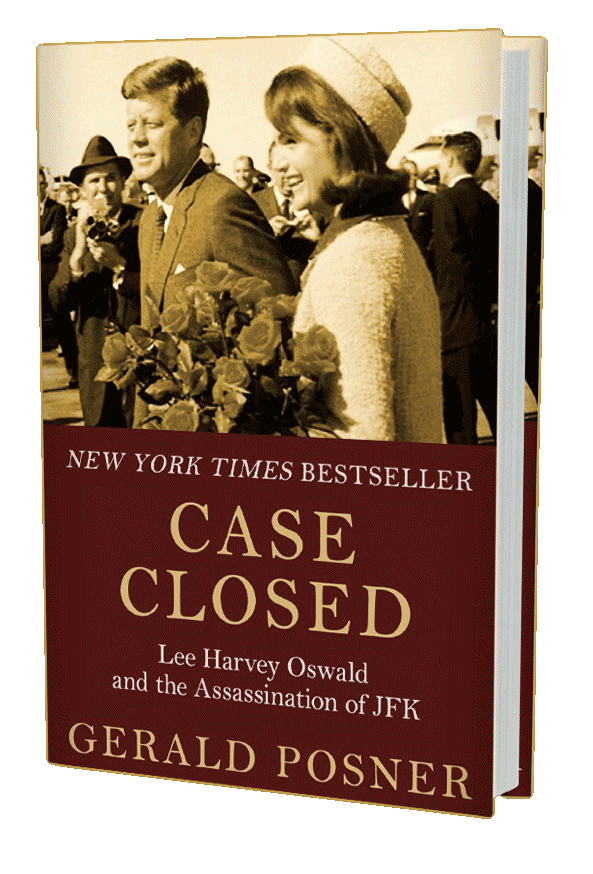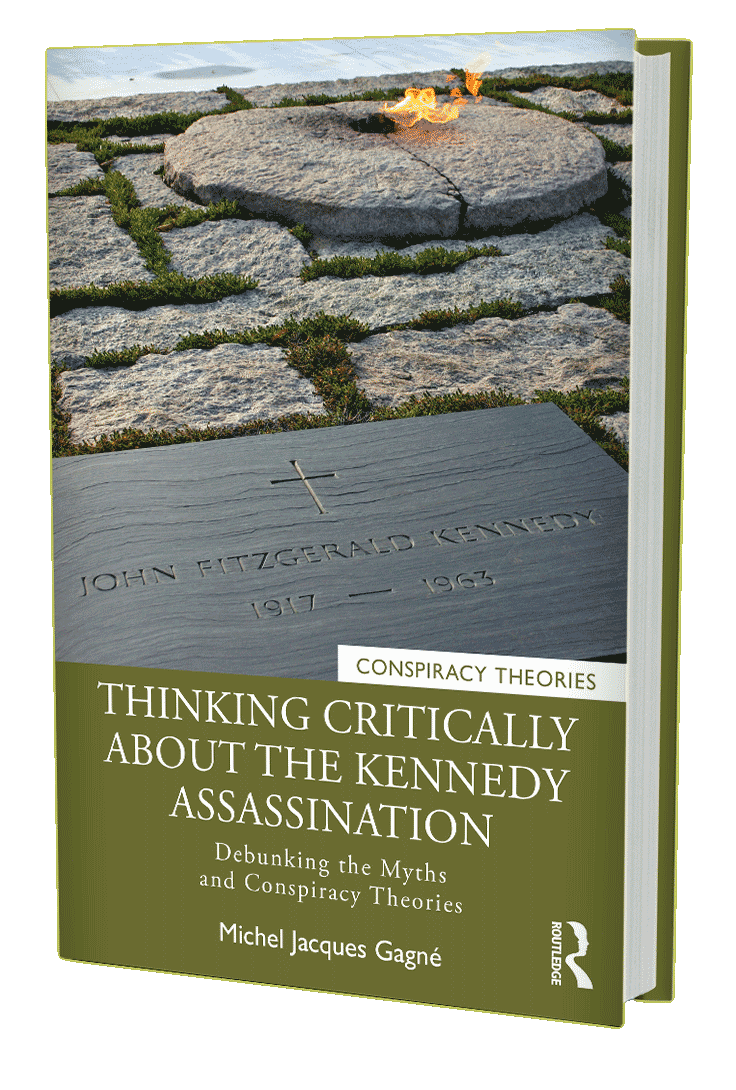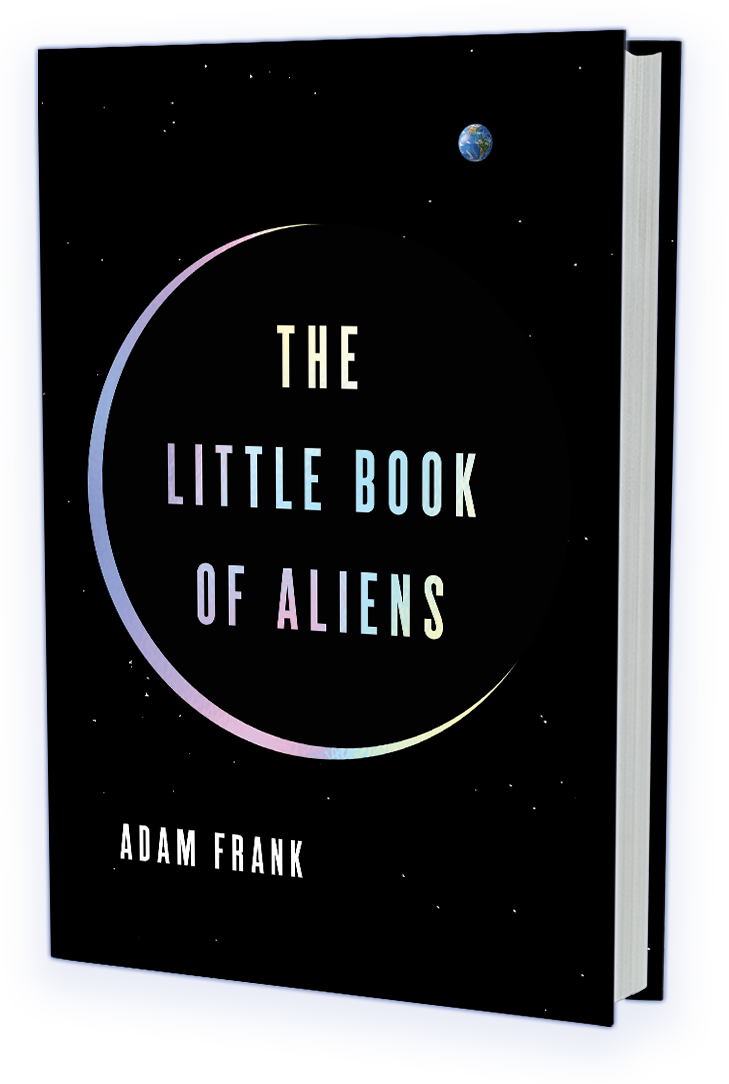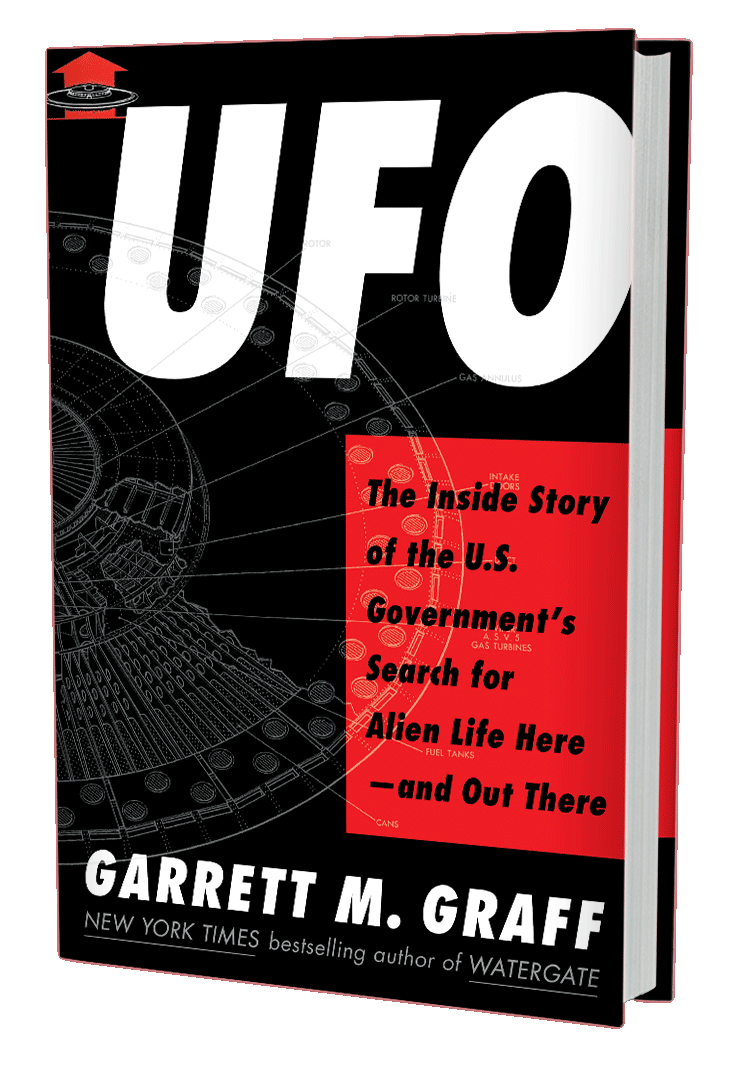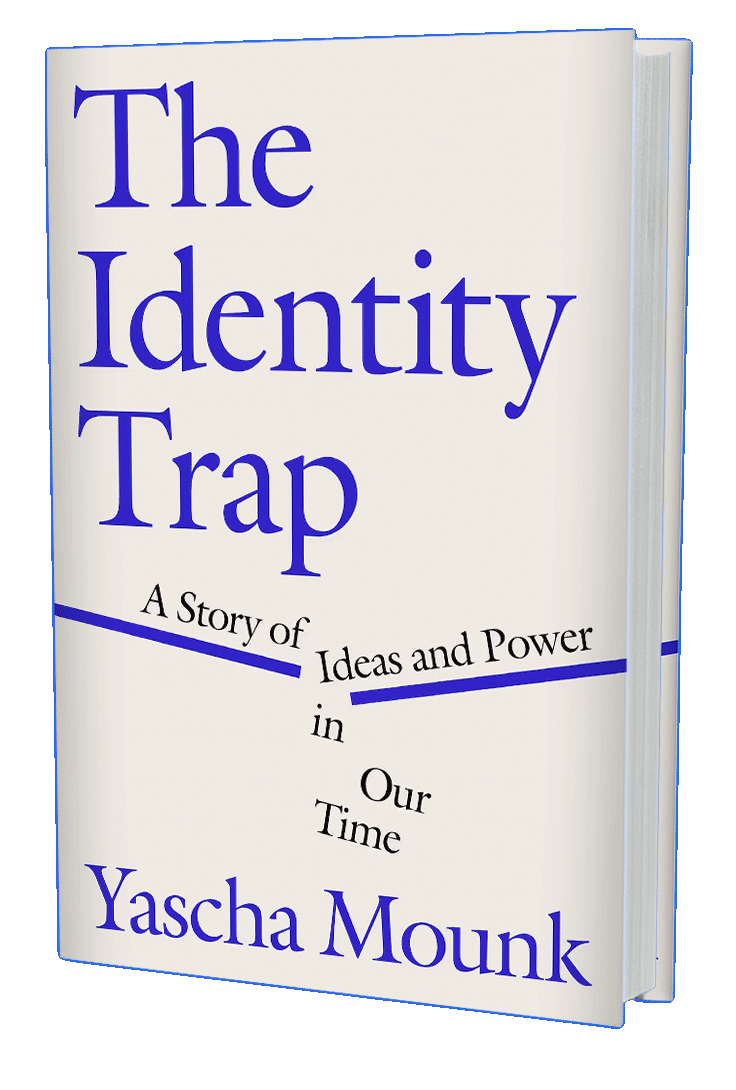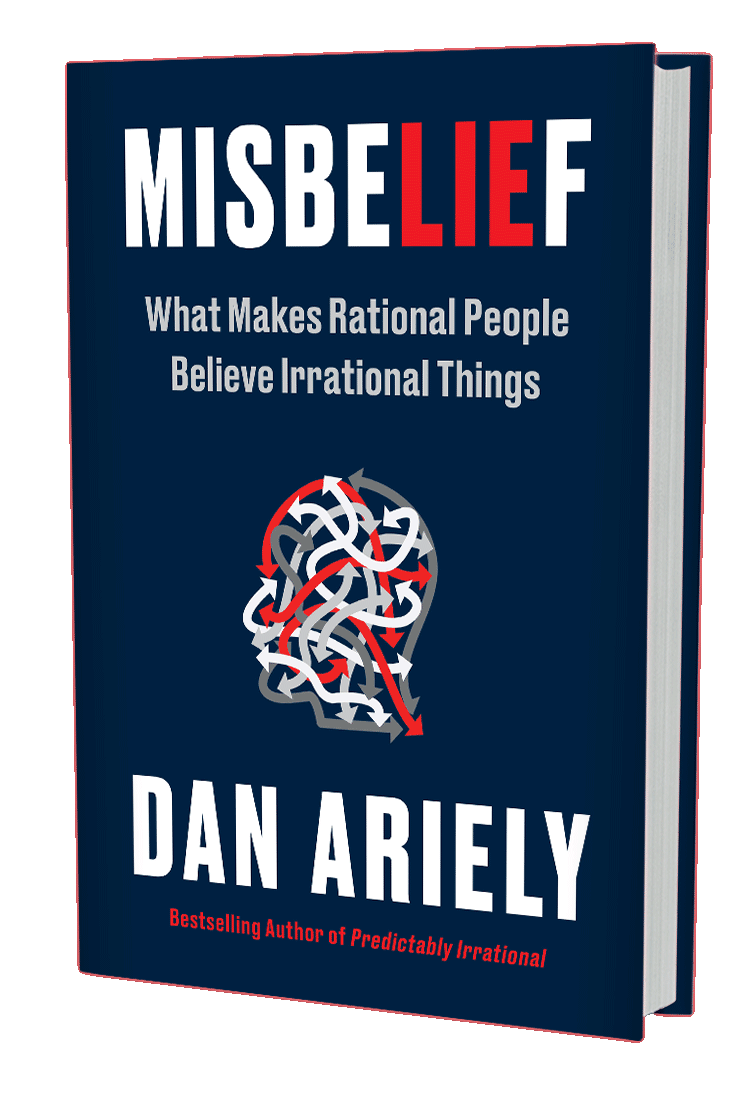Caylan Ford — Good and Evil, Human Nature, Education Reform, and Cancel Culture
Caylan Ford is a documentary filmmaker, writer, researcher, charter school founder, and a former political candidate. She is interested in the problem of political and philosophical evil, and most of her work is animated by a desire to help people recover their roots in reality and their orientation toward the divine. She was born in Calgary, Canada, and earned a Bachelor’s degree (Hons.) in Chinese history at the University of Calgary. From there she obtained a Master’s degree in International Affairs from the George Washington University, and worked on and off as a senior policy advisor for Canada’s foreign ministry for about ten years. Between the birth of her two children she earned another Master’s in International Human Rights Law at the University of Oxford. She hopes one day to do a degree in comparative eschatology.
A very large part of her life has been spent working, volunteering and consulting in the international human rights field, including by increasing access to anti-surveillance and censorship tools in Iran, China, Myanmar, and elsewhere; working with civil rights lawyers representing political dissidents; supporting refugee and asylum claimants; and conducting and publishing original research on the repression of religious minorities in China. She has written and co-produced two feature documentary films on the themes of religious and political persecution, censorship, forced labor, scapegoating, and mass persuasion under totalitarian regimes.
Her new documentary film, When the Mob Came, focuses on her experience of cancel culture following a catastrophic bid for political office in 2019. (Read her account of events.) Relatedly, she is the plaintiff in an ongoing $7 million defamation claim against several Canadian media and political institutions, and her case has so far resulted in the recognition of a new tort of civil harassment in Alberta. (Read about her litigation efforts.)
In 2022 she founded Canada’s first tuition-free classical charter school, Calgary Classical Academy, and she hopes to open a new campus in Edmonton. Watch a short video introduction to the Academy’s work and how it aims to promote knowledge of things that are true, good, and enduring.
Shermer and Ford discuss:
- education reform
- Can education be value free?
- public vs. private vs. charter schools
- human nature and the blank slate
- Thomas Sowell’s Constrained Vision vs. Unconstrained Vision
- conservatism vs. liberalism
- French Revolution vs. American Revolution
- in defense of truth, justice, and reality
- what promotes humanity and what degrades it
- sex, gender, trans
- transhumanism
- political correctness and identity politics
- cancel culture, witch crazes, and virtue signaling
- totalitarianism and preference falsification
- free speech, hate speech and slippery slopes
- how to stand up to cancel culture.
Show Notes
Cancel Culture Defined
Cancel culture operates on a similar principle to the Inferno. It delivers perpetual punishment, without any possibility of redemption, for heretics (or perceived heretics) against an emerging ideological orthodoxy: people who used the wrong word, defended inherited wisdom, or attempted to critically examine a topic that had been declared off-limits to philosophical inquiry. But cancel culture reflects and heightens the inverted priorities of the world. It incentivizes cruelty and performative outrage, and so suffocates humility, generosity, and openness. It asks us to go in search of grievances, and to look for the bad in others, but never to reproach ourselves. It inflames tribal hatreds and artificial divisions. It demands that people lie, that they confess to crimes they did not commit, and that they conceal their true beliefs to preserve themselves. Envy, hubris, and wrath are rewarded, while prudence and a slowness to judgement are treated with suspicion, as though they are evidence of an insufficient commitment to the cause. In the name of love and tolerance and solidarity, it asks us to hate our enemies, inform on our neighbors, and desert our friends.
Alberta Classical Academy
Inside the classrooms expert teachers guide students through a knowledge-rich curriculum using proven teaching methods of explicit instruction and the Socratic method beginning in grade 5 our students study Latin and all wear uniforms but don’t let that throw you we’re not a private school as a public charter school The Classical Academy is tuition free and open to all Learners who seek moral and intellectual Excellence without regard to their background, financial means, or postal code. We focus on the cultivation of virtues like courage, integrity, benevolence, fortitude, temperance, and magnanimity. We use an enhanced classical curriculum at the heart of which is a great books program. Our students read whole texts, books with depth and enduring value that illuminate those unchanging aspects of the human condition. They’re exposed to the best that has been thought and said in east or west, and are ennobled through the study of classical fine and performing arts like poetry, drama, music, dance, painting, and sculpting. They have an opportunity to directly study and observe the natural world and to contemplate the majesty and wonder of creation. Notably absent from our classrooms are the ubiquitous screens and the distraction of smartphones because we value deep learning and concentration. We use screen-based technologies in a minimal deliberate way and smartphones are prohibited at The Classical Academy. Our goal is not just to help students achieve academically, it is to prepare their minds and souls for liberty. We understand that our students are not just future workers. They are future friends, neighbors, spouses, parents, and citizens. They are bearers of divine Souls which thirst after knowledge of what is true, good and enduring. Our mission is to help them grow in virtue and in wisdom so that they may live well and with purpose.
From Michael Shermer’s 2011 book The Believing Brain, from the chapter on political beliefs
In his book A Conflict of Visions, the economist Thomas Sowell argues that these two clusters of moral values are intimately linked to the vision one holds about human nature, either as constrained (conservative) or unconstrained (liberal), and so he calls these the Constrained Vision and the Unconstrained Vision. Sowell shows that controversies over a number of seemingly unrelated social issues such as taxes, welfare, social security, health care, criminal justice, and war repeatedly reveal a consistent ideological dividing line along these two conflicting visions. “If human options are not inherently constrained, then the presence of such repugnant and disastrous phenomena virtually cries out for explanation—and for solutions. But if the limitations and passions of man himself are at the heart of these painful phenomena, then what requires explanation are the ways in which they have been avoided or minimized.”
Which of these natures you believe is true will largely shape which solutions to social ills will be most effective. “In the unconstrained vision, there are no intractable reasons for social evils and therefore no reason why they cannot be solved, with sufficient moral commitment. But in the constrained vision, whatever artifices or strategies restrain or ameliorate inherent human evils will themselves have costs, some in the form of other social ills created by these civilizing institutions, so that all that is possible is a prudent trade-off.” It’s not that conservatives think that we’re evil and liberals believe we’re good. “Implicit in the unconstrained vision is the notion that the potential is very different from the actual, and that means exist to improve human nature toward its potential, or that such means can be evolved or discovered, so that man will do the right thing for the right reason, rather than for ulterior psychic or economic rewards,” Sowell elaborates. “Man is, in short, ‘perfectible’—meaning continually improvable rather than capable of actually reaching absolute perfection.”1
In his masterpiece analysis of human nature, The Blank Slate, the Harvard psychologist Steven Pinker re-labels these two visions the Tragic Vision and the Utopian Vision, and reconfigures them slightly: “The Utopian Vision seeks to articulate social goals and devise policies that target them directly: economic inequality is attacked in a war on poverty, pollution by environmental regulations, racial imbalances by preferences, carcinogens by bans on food additives. The Tragic Vision points to the self-interested motives of the people who would implement these policies—namely, the expansion of their bureaucratic fiefdoms—and to their ineptitude at anticipating the myriad consequences, especially when the social goals are pitted against millions of people pursuing their own interests.” The distinct Left-Right divide consistently cleaves the (respectively) Utopian Vision and Tragic Vision along numerous specific contests, such as the size of the government (big versus small), the amount of taxation (high versus low), trade (fair versus free), healthcare (universal versus individual), environment (protect it versus leave it alone), crime (caused by social injustice versus caused by criminal minds), the constitution (judicial activism for social justice versus strict constructionism for original intent), and many others.2
Personally I agree with Sowell and Pinker that the unconstrained vision is utopian, which in its original Greek means “no place.” An unconstrained utopian vision of human nature largely accepts the blank slate model and believes that custom, law, and traditional institutions are sources of inequality and injustice and should therefore be heavily regulated and constantly modified from the top down; it holds that society can be engineered through government programs to release the natural unselfishness and altruism within people; it deems physical and intellectual differences largely to be the result of unjust and unfair social systems that can be re-engineered through social planning, and therefore people can be shuffled across socioeconomic classes that were artificially created through unfair and unjust political, economic, and social systems inherited from history. I believe that this vision of human nature exists in literally No Place.
Although some liberals embrace just such a vision of human nature, I strongly suspect that when pushed on specific issues most liberals realize that human behavior is constrained to a certain degree—especially those educated in the biological and evolutionary sciences who are aware of the research in behavior genetics—so the debate turns on degrees of constraint. Rather than there being two distinct and unambiguous categories of constrained and unconstrained (or tragic and utopian) visions of human nature, I think there is just one vision with a sliding scale. Let’s call this the Realistic Vision. If you believe that human nature is partly constrained in all respects—morally, physically, and intellectually—then you hold a Realistic Vision of human nature. In keeping with the research from behavioral genetics and evolutionary psychology, let’s put a number on that constraint at 40 to 50 percent. In the Realistic Vision, human nature is relatively constrained by our biology and evolutionary history, and therefore social and political systems must be structured around these realities, accentuating the positive and attenuating the negative aspects of our natures.
A Realistic Vision rejects the blank slate model that people are so malleable and responsive to social programs that governments can engineer their lives into a great society of its design, and instead believes that family, custom, law, and traditional institutions are the best sources for social harmony. The Realistic Vision recognizes the need for strict moral education through parents, family, friends, and community because people have a dual nature of being selfish and selfless, competitive and cooperative, greedy and generous, and so we need rules and guidelines and encouragement to do the right thing. The Realistic Vision acknowledges that people vary widely both physically and intellectually—in large part because of natural inherited differences—and therefore will rise (or fall) to their natural levels. Therefore governmental redistribution programs are not only unfair to those from whom the wealth is confiscated and redistributed, but the allocation of the wealth to those who did not earn it cannot and will not work to equalize these natural inequalities.
I think most moderates on both the left and the right embrace a Realistic Vision of human nature. They should, as should the extremists on both ends, because the evidence from psychology, anthropology, economics, and especially evolutionary theory and its application to all three of these sciences supports the Realistic Vision of human nature. There are at least a dozen lines of evidence that converge to this conclusion:3
- The clear and quantitative physical differences among people in size, strength, speed, agility, coordination, and other physical attributes that translates into some being more successful than others, and that at least half of these differences are inherited.
- The clear and quantitative intellectual differences among people in memory, problem solving ability, cognitive speed, mathematical talent, spatial reasoning, verbal skills, emotional intelligence, and other mental attributes that translates into some being more successful than others, and that at least half of these differences are inherited.
- The evidence from behavior genetics and twin studies indicating that 40 to 50 percent of the variance among people in temperament, personality, and many political, economic, and social preferences are accounted for by genetics.
- The failed communist and socialist experiments around the world throughout the 20th century revealed that top-down draconian controls over economic and political systems do not work.
- The failed communes and utopian community experiments tried at various places throughout the world over the past 150 years demonstrated that people by nature do not adhere to the Marxian principle “from each according to his ability, to each according to his need.”
- The power of family ties and the depth of connectedness between blood relatives. Communities who have tried to break up the family and have children raised by others provides counter evidence to the claim that “it takes a village” to raise a child. As well, the continued practice of nepotism further reinforces the practice that “blood is thicker than water.”
- The principle of reciprocal altruism—I’ll scratch your back if you’ll scratch mine”—is universal; people do not by nature give generously unless they receive something in return, even if what they receive is social status.
- The principle of moralistic punishment—I’ll punish you if you do not scratch my back after I have scratched yours—is universal; people do not long tolerate free riders who continually take but almost never give.
- The almost universal nature of hierarchical social structures—egalitarianism only works (barely) among tiny bands of hunter-gatherers in resource-poor environments where there is next to no private property, and when a precious game animal is hunted extensive rituals and religious ceremonies are required to insure equal sharing of the food.
- The almost universal nature of aggression, violence, and dominance, particularly on the part of young males seeking resources, women, and especially status, and how status-seeking in particular explains so many heretofore unexplained phenomena, such as high risk taking, costly gifts, excessive generosity beyond one’s means, and especially attention seeking.
- The almost universal nature of within-group amity and between-group enmity, wherein the rule-of-thumb heuristic is to trust in-group members until they prove otherwise to be distrustful, and to distrust out-group members until they prove otherwise to be trustful.
- The almost universal desire of people to trade with one another, not for the selfless benefit of others or the society, but for the selfish benefit of one’s own kin and kind; it is an unintended consequence that trade establishes trust between strangers and lowers between-group enmity, as well as produces greater wealth for both trading partners and groups.
The founders of our Republic established our system of government as they did based on this Realistic Vision of human nature, knowing full well that the tension between individual liberty and social cohesiveness could never be resolved to everyone’s satisfaction, and so the moral pendulum swings Left and Right and politics is played mostly between the two 40-yard lines of the political playing field. This tension between freedom and security, in fact, would explain why third parties have such a difficult time finding a toe-hold on the political rock face of America, and typically crater after an election, or cower in the shadows of two behemoths that have come to define the Left-Right system. Even in Europe, where third, fourth, and even fifth parties receive substantial support at the polls, they are, in fact, barely distinguishable from the parties on either side of them, and political scientists find that they can easily classify them as largely emphasizing either liberal or conservative values. Haidt’s data on the differing foundational values of American liberals and conservatives, in fact, generalizes to all countries that have been tested, and the chart lines from country to country are virtually indistinguishable from one another.
I believe that the Realistic Vision of human nature is what James Madison was thinking of when he penned (literally) his famous dictum in the Federalist Paper Number 51: “If men were angels, no government would be necessary.4 If angels were to govern men, neither external nor internal controls on government would be necessary.” Abraham Lincoln also had something like the Realistic Vision in mind when he wrote in his first inaugural address in March of 1861, on the eve of the bloodiest conflict in our nation’s history that he knew would unleash the demons within: “Though passion may have strained, it must not break our bonds of affection. The mystic chords of memory, stretching from every battlefield and patriot grave to every living heart and hearthstone all over this broad land, will yet swell the chorus of the Union, when again touched, as surely they will be, by the better angels of our nature.”5
References
- Sowell, Thomas. 1987. A Conflict of Visions: Ideological Origins of Political Struggles. New York: Basic Books, 24-25.
- Pinker, Steven. 2002. The Blank Slate: The Modern Denial of Human Nature. New York: Viking, 290-291.
- I present this data in much greater detail in two of my books: Shermer, Michael. 2003. The Science of Good and Evil. New York: Henry Holt/Times Books. And: Shermer, Michael. 2008. The Mind of the Market. New York: Henry Holt/Times Books.
- Madison, James. 1788. “The Federalist No. 51: The Structure of the Government Must Furnish the Proper Checks and Balances Between the Different Departments.” Independent Journal, Wednesday, February 6.
- Inaugural Addresses of the Presidents of the United States. Washington, D.C.: U.S. G.P.O.: for sale by the Supt. of Docs., U.S. G.P.O., 1989; Bartleby.com, 2001. https://www.bartleby.com/124/.
Michael Greger — How Not to Age
When Dr. Michael Greger, founder of NutritionFacts.org, dove into the top peer-reviewed anti-aging medical research, he realized that diet could regulate every one of the most promising strategies for combating the effects of aging. We don’t need Big Pharma to keep us feeling young―we already have the tools. In How Not to Age, the internationally renowned physician and nutritionist breaks down the science of aging and chronic illness and explains how to help avoid the diseases most commonly encountered in our journeys through life.
Physicians have long treated aging as a malady, but getting older does not have to mean getting sicker. There are eleven pathways for aging in our bodies’ cells and we can disrupt each of them. Processes like autophagy, the upcycling of unusable junk, can be boosted with spermidine, a compound found in tempeh, mushrooms, and wheat germ. Senescent “zombie” cells that spew inflammation and are linked to many age-related diseases may be cleared in part with quercetin-rich foods like onions, apples, and kale. And we can combat effects of aging without breaking the bank. Why spend a small fortune on vitamin C and nicotinamide facial serums when you can make your own for up to 2,000 times cheaper?
Inspired by the dietary and lifestyle patterns of centenarians and residents of “Blue Zone” regions where people live the longest, Dr. Greger presents simple, accessible, and evidence-based methods to preserve the body functions that keep you feeling youthful, both physically and mentally. Brimming with expertise and actionable takeaways, How Not to Age lays out practical strategies for achieving ultimate longevity.
A founding member and Fellow of the American College of Lifestyle Medicine, Michael Greger, MD, is a physician, New York Times bestselling author, and internationally recognized speaker on nutrition, food safety, and public health issues. He has lectured at the Conference on World Affairs, testified before Congress, and was invited as an expert witness in the defense of Oprah Winfrey in the infamous “meat defamation” trial. In 2017, Dr. Greger was honored with the ACLM Lifestyle Medicine Trailblazer Award. He is a graduate of Cornell University School of Agriculture and Tufts University School of Medicine. His first book How Not to Die became an instant New York Times Best Seller. He is also the author of The How Not to Die Cookbook, How Not to Diet, The How Not to Diet Cookbook, and How to Survive a Pandemic. He has videos on more than 2,000 health topics freely available at NutritionFacts.org, with new videos and articles uploaded every day. All proceeds he receives from his books, DVDs, and speaking engagements are donated to charity.
Shermer and Greger discuss:
- low trust in medicine and public health post-Covid
- why we age and die
- Is aging a disease?
- No one dies from old age?
- lifespan, vs. healthspan vs. life expectancy
- longevity escape velocity
- leading causes of death: heart disease, cancer, stroke, dementia
- aging in the Paleolithic vs. Civilization
- how to determine causality in aging science: genes, environment, diet, and luck
- dietary and nutrition fads in history
- the diet and anti-aging industry: multibillion-dollar behemoths: $88 billion US, $292 billion worldwide
- diet and beverages
- What centenarians eat?
- Mediterranean Diet
- Okinawan Diet
- Red, White, and Blue Zones
- plant-based eating
- meat, dairy, eggs, etc.
- lifestyle
- exercise
- weight control
- sleep
- stress
- the Anti-Aging 8: nuts, greens, berries, prebiotics and postbiotics
- cholesterol and statins
- vaccines: shingles, flu, etc.
- brain supplements
- sunscreen
- sunglasses and UV
- alcohol
- Alzheimer’s and dementia
- social ties, friendships, and marriage.
Excerpt from the Book
Even if all forms of cancer were eliminated, the average life expectancy in the United States would only go up about three years. Because dodging cancer would just mean delaying death from something like a heart attack or stroke. If one age-related ailment doesn’t get us, another will. Rather than playing “whack-a-mole” by tackling each disease separately, progress in decelerating aging could address all these issues simultaneously.
How long do you wish to live? 85, 120, 150, indefinitely (2/3 said 85) when the question was reframed as How long do you wish to live in guaranteed mental and physical health?, the most popular answer switched to an unlimited lifespan.
Only about 18 percent of people can be described as undergoing “successful aging.” Studies have found the prevalence of multimorbidity, the coexistence of multiple chronic diseases, ranges between 55 percent and 98 percent among older individuals. By age eighty-five, more than 90 percent may have at least one disease and, on average, about four diseases. And just like 85 percent of cancer patients tend to overestimate their survival, so, too, do those with other chronic diseases. Those suffering from heart failure or chronic obstructive lung diseases like emphysema are about three times more likely to die within the subsequent year than they predicted.
A twenty-year-old in 1998 could expect to live about fifty-eight more years, while a twenty-year-old in 2006 could look forward to fifty-nine more years. However, the twenty-year-old from the 1990s might live ten of those years with chronic disease, whereas now it’s more like thirteen years. So it feels like one step forward, three steps back. The researchers also noted that we’re living two fewer functional years—that is, years we’re no longer able to perform basic life activities, such as walking a quarter of a mile, standing or sitting for two hours without having to lie down, or standing without special equipment.
In terms of life expectancy, the United States ranked down around 27 or 28 out of the 34 top free-market democracies. People in Slovenia live longer than we do. That was in 2010, down from ranking 20th in 1990. More recently, U.S. life expectancy dipped to 43rd in the world and is expected to drop to 64th by 2040, despite spending trillions on healthcare a year, more than anyone else around the globe. The problem isn’t healthcare access. The Mayo Clinic estimates that nearly 70 percent of Americans are on prescription drugs. The problem is that those trillions in healthcare spending aren’t addressing the root cause. The leading risk factor for death in the United States is what we eat. It’s the food. The standard American diet is just to die for. Literally.
According to one industry group, 60 percent of Americans sixty-five and older are pursuing anti-aging interventions, yet, according to the director of the Institute for Biomedical Aging Research, in almost all instances, these interventions are not supported by science. They sound like they are, though. Scientific breakthroughs exploited by the sensationalist press have long been opportunistically repackaged by profiteers.
“Simply put,” the American Academy of Anti-Aging Medicine’s official response to the criticism read, “the death cult of gerontology desperately labors to sustain an arcane, outmoded stance that aging is natural and inevitable.”
The odds of living to age one hundred have risen from approximately one in twenty million to as high as one in fifty. Why do some make it to their hundredth birthday but others don’t? It’s not just a matter of picking better parents. Studies following identical twins suggest that no more than 20 to 30 percent of the variance in lifespan is explained by gene inheritance.
TAGS: aging, Alzheimers, anti-aging, Blue Zones, causality, centenarians, cholesterol, diets, disease, fads, life expectancy, longevity, nutrition, Science Salon, supplements, The Michael Shermer ShowThe Kill Your Brother Game:
Playful Dramas & Unintended Consequences of Censorship
Playful Dramas & Unintended Consequences of Censorship
During her sojourns among the Inuit throughout the 1960s and 70s, pioneering anthropologist Jean Briggs observed some peculiar parenting practices. In a chapter she contributed to The Anthropology of Peace and Nonviolence, a collection of essays from 1994, Briggs describes various methods the Inuit used to reduce the risk of physical conflict among community members. Foremost among them was the deliberate cultivation of modesty and equanimity, along with a penchant for reframing disputes or annoyances as jokes. “An immodest person or one who liked attention,” Briggs writes, “was thought silly or childish.” Meanwhile, a critical distinction held sway between seriousness and playfulness. “To be ‘serious’ had connotations of tension, anxiety, hostility, brooding,” she explains. “On the other hand, it was highest praise to say of someone: ‘He never takes anything seriously’.”1 The ideal then was to be happy, jocular, and even-tempered.
This distaste for displays of anger applied in the realm of parenting as well. No matter how unruly children’s behavior, adults would refrain from yelling at them. So, it came as a surprise to Briggs that Inuit adults would often purposely instigate conflicts among the children in their charge. One exchange Briggs witnessed involved an aunt taking her three-year-old niece’s hand and putting it in another child’s hair while telling her to pull it. When the girl refused, the aunt gave it a tug herself. The other child, naturally enough, turned around and hit the one she thought had pulled her hair. A fight ensued, eliciting laughter and cheers from the other adults, who intervened before anyone was hurt. None of the other adults who witnessed this incident seemed to think the aunt had done anything wrong.
On another occasion, Briggs witnessed a mother picking up a friend’s baby and saying to her own nursling, “Shall I nurse him instead of you?” The other mother played along, offering her breast to the first woman’s baby, saying, “Do you want to nurse from me? Shall I be your mother?”2 The nursling shrieked in protest, and both mothers burst into laughter. Briggs witnessed countless more of what she calls “playful dramas” over the course of her research. Westerners might characterize what the adults were doing in these cases as immature, often cruel pranks, even criminal acts of child abuse. What Briggs came to understand, however, was that the dramas served an important function in the context of Inuit culture. Tellingly, the provocations didn’t always involve rough treatment or incitements to conflict but often took the form of outrageous or disturbing lines of questioning. This approach is reflected in the title of Briggs’s chapter, “‘Why Don’t You Kill Your Baby Brother?’ The Dynamics of Peace in Canadian Inuit Camps.” However, even these gentler sessions were more interrogation than thought experiment, the clear goal being to arouse intense emotions in the children.
From interviews with adults in the communities hosting her, Briggs gleaned that the purpose of these dramas was to force children to learn how to handle difficult social situations. The term they used is isumaqsayuq, meaning “to cause thought,” which Briggs notes is a “central idea of Inuit socialization.” “More than that,” she goes on, “and as an integral part of thought, the dramas stimulate emotion.” The capacity for clear thinking in tense situations—and for not taking the tension too seriously—would help the children avoid potentially dangerous confrontations. Briggs writes:
TAGS: anger, anthropology, banning, censorship, cognitive psychology, conflict, cooperation, emotions, human behavior, morality, relationships, socializationThe games were, themselves, models of conflict management through play. And when children learned to recognize the playful in particular dramas, people stopped playing those games with them. They stopped tormenting them. The children had learned to keep their own relationships smoother—to keep out of trouble, so to speak— and in doing so, they had learned to do their part in smoothing the relationships of others.3 CONTINUE READING THIS POST…
Andrew Shtulman — Learning to Imagine: The Science of Discovering New Possibilities
Imagination is commonly thought to be the special province of youth―the natural companion of free play and the unrestrained vistas of childhood. Then come the deadening routines and stifling regimentation of the adult world, dulling our imaginative powers. In fact, Andrew Shtulman argues, the opposite is true. Imagination is not something we inherit at birth, nor does it diminish with age. Instead, imagination grows as we do, through education and reflection.
The science of cognitive development shows that young children are wired to be imitators. When confronted with novel challenges, they struggle to think outside the box, and their creativity is rigidly constrained by what they deem probable, typical, or normal. Of course, children love to “play pretend,” but they are far more likely to simulate real life than to invent fantasy worlds of their own. And they generally prefer the mundane and the tried-and-true to the fanciful or the whimsical.
Children’s imaginations are not yet fully formed because they necessarily lack knowledge, and it is precisely knowledge of what is real that provides a foundation for contemplating what might be possible. The more we know, the farther our imaginations can roam. As Learning to Imagine demonstrates, the key to expanding the imagination is not forgetting what you know but learning something new. By building upon the examples of creative minds across diverse fields, from mathematics to religion, we can consciously develop our capacities for innovation and imagination at any age.
Andrew Shtulman is Professor of Psychology at Occidental College where he directs the Thinking Lab. His award-winning research has been featured in the New York Times and the Wall Street Journal. His previous book was Scienceblind: Why Our Intuitive Theories About the World Are So Often Wrong. His new book is Learning to Imagine: The Science of Discovering New Possiblities.
Shermer and Shtulman discuss:
- Are we rational, irrational, or both?
- Did our senses and brain evolve for veridical perception or just fitness to get our genes into the next generation?
- Are children natural-born scientists experimenting with the world?
- Imagination defined: the capacity to generate alternatives to reality
- Imagination evolved
- Imagination’s purpose
- Imagination’s structure
- Anomalies
- Counterfactuals
- Expanding imagination by example: Testimony, Technology, Empirical Discovery
- Expanding imagination by principle: Scientific, Mathematical, Ethical
- Expanding imagination by model: pretense, fiction, religion
-
Children
- Children and development of imagination: are they natural-born innovators?
- Are children highly gullible or skeptical? Rational or emotional/intuitive?
- How children understand causality
- How children develop morality and moral principles
- Pretend play’s purpose
- Children’s preference for nonfiction vs. fiction, prosaic stories vs. unusual ones, realism vs. fantasy
- Why children do not have a more expansive imagination than adults
- Are children more exploratory than adults?
- Are children natural-born scientists?
-
Religion
- Images of God, Heaven, Hell, the afterlife, etc., from anthropomorphic to abstract
- Children’s images of God etc.
- Theory of mind and the mind of God
- Baptism
- Faith Frame: Tanya Luhrmann: religious practices are not byproducts of belief but means of achieving it by turning vague abstractions into palpable experiences
- AI and creativity
- The Beatles and creativity
- Education: Montessori.
Education Matters in the Culture Wars:
Can We Separate Bias From Ideology?
Can We Separate Bias From Ideology?
“And why do you look at the speck in your brother’s eye, but do not consider the plank in your own eye?”
“The greatest of faults, I should say, is to be conscious of none.”
Schools, from kindergarten to graduate programs, are always ground zero in any culture war. Ban their books! Fire their teachers! Extremists from both the right and the left share this censorious impulse to protect their children from dangerous ideas—dangerous ideas being defined as anything on which people disagree, usually sex, race, gender, sex, history, religion, prejudice, and did I say sex? They deliver propaganda. We tell the truth. They indoctrinate our children. We educate them.
Let’s stipulate that everyone is biased. The brain comes packaged with a bunch of self-serving mechanisms (the confirmation bias, hindsight bias, and so on) that allow us to justify our own perceptions and beliefs as being accurate, realistic, and wise. My favorite bias is the bias that we are unbiased. Social psychologist Lee Ross named this phenomenon “naive realism,” the conviction that we perceive objects and events clearly, “as they really are,” so anyone who disagrees with us is not seeing clearly.
Science, which might be defined as the systematic effort to force us to see clearly especially when we are wrong, is always under attack from those who cannot tolerate the mere existence of dissonant views. Today, however, the venom of polarizing ideologies has been poisoning the process more than ever. How true, but now how quaint, seems the sublime observation by Richard Feynman to students in his 1964 class at Cornell University:
TAGS: banning, belief, bias, censorship, cognitive dissonance, confirmation bias, ideology, indoctrination, literacy, myside bias, polarization, political bias, propaganda, scienceIf your guess disagrees with experiment, it is wrong. In that simple statement is the key to science. It doesn’t make any difference how beautiful your guess is, how smart you are, who made the guess, or what his name is. If it disagrees with experiment, it’s wrong. That’s all there is to it. CONTINUE READING THIS POST…
Angus Deaton — Economics in America: Inequalities and the Future of Capitalism
When economist Angus Deaton immigrated to the United States from Britain in the early 1980s, he was awed by America’s strengths and shocked by the extraordinary gaps he witnessed between people. In this conversation based on his new book, Economics in America, the Nobel Prize-winning economist explains in clear terms how the field of economics addresses the most pressing issues of our time—from poverty, retirement, and the minimum wage to the ravages of the nation’s uniquely disastrous health care system—and narrates Deaton’s account of his experiences as a naturalized U.S. citizen and academic economist.
Deaton is witty and pulls no punches. In his incisive, candid, and funny book, he describes the everyday lives of working economists, recounting the triumphs as well as the disasters, and tells the inside story of the Nobel Prize in economics and the journey that led him to Stockholm to receive one. He discusses the ongoing tensions between economics and politics―and the extent to which economics has any content beyond the political prejudices of economists―and reflects on whether economists bear at least some responsibility for the growing despair and rising populism in America.
Blending rare personal insights with illuminating perspectives on the social challenges that confront us today, Deaton offers a disarmingly frank critique of his own profession while shining a light on his adopted country’s policy accomplishments and failures.
Angus Deaton, winner of the 2015 Nobel Prize in economics, is the Dwight D. Eisenhower Professor of Economics and International Affairs Emeritus and Senior Scholar at Princeton University. He is the author (with Anne Case) of the New York Times bestselling book Deaths of Despair and the Future of Capitalism, The Great Escape: Health, Wealth and the Origins of Inequality, and his new book Economics in America: An Immigrant Economist Explores the Land of Inequality, all from Princeton University Press.
“Practical men who believe themselves to be quite exempt from any intellectual influence, are usually the slaves of some defunct economist. Madmen in authority, who hear voices in the air, are distilling their frenzy from some academic scribbler of a few years back.”
Shermer and Deaton discuss:
- What’s it like to win the Nobel Prize?
- What do economists do?
- What kind of science is economics?
- Ludwig von Mises, Friedrich Hayek, Milton Friedman, Ayn Rand
- How economists determine causality of problems, e.g., deaths of despair?
- Why a college education matters
- Meritocracy and the “Just World” theory of how lives turn out
- Minimum wage
- Healthcare
- Poverty
- Inequality
- Deaths of despair: causes and consequences
- Opioid crisis, alcoholism, suicide
- Why people die by suicide
- Inflation: what causes it and what lowers it?
- Interest rates and the Federal Reserve
- What makes money valuable without the gold standard?
- Modern Monetary Theory
-
Adam Smith and what he really said (text from The Mind of the Market):
It should be clear by now that Adam Smith was anything but blindly pro-business, as the myth shrouding his legacy would have us believe. Adam Smith was, in fact, quite skeptical of the base motives of producers. Throughout The Wealth of Nations, Smith criticized “factions”—groups of politically connected businessmen, bankers, tradesmen, and industrialists who turned to the government to do their bidding—because their formation constituted a power bloc that would serve the special interests of producers rather than the general interests of consumers:
“People of the same trade seldom meet together, even for merriment and diversion, but the conversation ends in a conspiracy against the public, or in some contrivance to raise prices.”
- What poorer countries need to do to become richer countries
- Obama’s “you didn’t build that” speech (should have added “by yourself”)
- Electricity markets
- Religion and capitalism: Billy Graham, Normal Vincent Peale
- Conservative Think Tanks, Libertarian Think Tanks.
Twitter Questions
Matt Johnson
Does he think globalization is to blame for Trumpism? Has he read Michael Sandel’s book The Tyranny of Merit? If so, what does he think about it?
Stan C. Cox
Maybe the trade-offs between maximizing world’s TOTAL wealth vs. distributing wealth more evenly among 8B people; and far we should go to redistribute wealth.
Patrick Towey, Non-Racist
Modern monetary theory.
Bonus questions
- What is something that you used to strongly believe, but have since changed your mind about?
- If you could have a conversation with any historical figure, living or dead, who would it be and what would you ask them?
- What is the most important lesson that you’ve learned in your life so far?
- What has been the biggest challenge that you’ve overcome?
Philip Goff — The Purpose of the Universe
Why are we here? What’s the point of existence? On the ‘big questions’ of meaning and purpose, Western thought has been dominated by the dichotomy of traditional religion and secular atheism. In his pioneering work, Philip Goff argues that it is time to move on from both God and atheism. Through an exploration of contemporary cosmology and cutting-edge philosophical research on consciousness, Goff argues for cosmic purpose: the idea that the universe is directed towards certain goals, such as the emergence of life.
In contrast to religious thinkers, Goff argues that the traditional God is a bad explanation of cosmic purpose. Instead, he explores a range of alternative possibilities for accounting for cosmic purpose, from the speculation that we live in a computer simulation to the hypothesis that the universe itself is a conscious mind. Goff scrutinizes these options with analytical rigour, laying the foundations for a new paradigm of philosophical enquiry into the middle ground between God and atheism. Ultimately, Goff outlines a way of living in hope that cosmic purpose is still unfolding, involving political engagement and a non-literalist interpretation of traditional religion.
Philip Goff is Professor of Philosophy at Durham University. His research focuses on consciousness and the ultimate nature of reality. Goff is best known for defending panpsychism, the view that consciousness pervades the universe and is a fundamental feature of it. On that theme, Goff has published three books, Consciousness and Fundamental Reality, Galileo’s Error: Foundations for a New Science of Consciousness, and a co-edited volume, Is Consciousness Everywhere? Essays on Panpsychism. Goff has published many academic articles, as well as writing extensively for newspapers and magazines, including Scientific American, The Guardian, Aeon, and the Times Literary Supplement. His new book is Why: The Purpose of the Universe.
Shermer and Goff discuss:
- religious answers to the purpose question
- secular answers to the purpose question
- Are we living in a computer simulation?
- the universe itself as a conscious mind
- cosmic purpose: the universe is directed towards certain goals, such as the emergence of life, sentience, consciousness, and morality
- fine-tuning
- free will
- consciousness
- morality and the Is-Ought Fallacy
- Is consciousness the ground of all being?
- What is my purpose in life?
- awe and how to be spiritual but not religious.
Show Notes From Michael Shermer’s Writings
Consciousness
Consciousness is typically defined as “what it’s like to be something.” Consider dolphins. Diving with them close by on many occasions has made one wonder what it’s like to be a dolphin. If I added echolocation to my sensory systems perhaps I would be able to “see” the shapes of things with sound waves, and that would nudge me a bit closer to dolphin-ness. Bolting on flippers to serve as a tail would allow me to power through the viscous aquatic medium. Adding a blowhole, an appetite for squid, and the ability to make clicks and whistle sounds would nudge me further along the dolphin-ness scale. But the only way to actually have the full-on qualitative experience of dolphin-ness is to actually be a dolphin with all that entails anatomically, physiologically, and cognitively. In that case, then, I would no longer be a human asking what it’s like to be a dolphin. I’d be a dolphin, perhaps asking what it’s like to be a human. Such thought experiments were first and famously proposed by the philosopher Thomas Nagel in 1974 in his now classic paper, “What is it Like to be a Bat?” It is not only a hard question to answer for all these anatomical, physiological, and cognitive reasons, it is logically impossible because it would violate Aristotle’s Law of Identity—A is A. A cannot also be non-A. You cannot be one thing (a human) and another thing (a dolphin) at the same time.
The thought experiment is also conceptually flawed as it implies a form of dualism in which my soul or homunculus transports into the body of a dolphin to experience its physical and mental state of being. This is not possible because there is no ghost in the machine, no soul in the body, and no mind in the brain, as if these are different entities that can separate and travel elsewhere. This “essentialism,” as it is called, leads us to intuitively feel like we have a soul or mind, and so we get the humor of films like All of Me, in which the gendered soul of Steve Martin’s character switches places with that of Lili Thomas so that each knows what it’s like to be the other sex (with all the expected comedy that follows), or in the film Freaky Friday, in which the teenage soul of Lindsay Lohan swaps with the middle-age mom soul of Jamy Lee Curtis and hilarity ensues. Novelists have explored similar themes, as in Franz Kafka’s Metamorphosis, in which a man falls asleep and wakes up as a cockroach, but his human personality remains intact inside the insect.
The thought experiment is also conceptually flawed as it implies a form of dualism in which my soul or homunculus transports into the body of a dolphin to experience its physical and mental state of being. This is not possible because there is no ghost in the machine, no soul in the body, and no mind in the brain, as if these are different entities that can separate and travel elsewhere.
Pinker’s final assessment of the hard problem of consciousness, which he articulated in his 2018 book Enlightenment Now:
Our best science tells us that consciousness consists of a global workspace representing our current goals, memories, and surroundings, implemented in synchronized neural firing in fronto-parietal circuitry. But the last dollop in the theory—that it subjectively feels like something to be such circuitry—may have to be stipulated as a fact about reality where explanation stops.
Alvi’s Error
Call it Alvy’s Error: assessing the purpose of something at the wrong level of analysis. The level at which we should assess our actions is the human time scale of days, weeks, months, and years—our four-score ± 10 lifespan—not the billions of years of the cosmic calendar. It is a mistake made by theologians when arguing that without a source external to our world to vouchsafe morality and meaning, nothing really matters. One of the most prominent theologians of our time, William Lane Craig, committed Alvy’s Error in a 2009 debate at Columbia University with the Yale philosopher Shelly Kagan when he pronounced:
On a naturalistic worldview everything is ultimately destined to destruction in the heat-death of the universe. As the universe expands it grows colder and colder as its energy is used up. Eventually all the stars will burn out, all matter will collapse into dead stars and black holes, there will be no life, no heat, no light, only the corpses of dead stars and galaxies expanding into endless darkness. In light of that end it’s hard for me to understand how our moral choices have any sort of significance. There’s no moral accountability. The universe is neither better nor worse for what we do. Our moral lives become vacuous because they don’t have that kind of cosmic significance.
Kagan properly nailed Craig, referencing the latter’s example of godless Nazi torturers: “This strikes me as an outrageous thing to suggest. It doesn’t really matter? Surely it matters to the torture victims whether they’re being tortured. It doesn’t require that this make some cosmic difference to the eternal significance of the universe for it to matter whether a human being is tortured. It matters to them, it matters to their family, and it matters to us.”
Craig committed a related mistake when he argued that, “Without God there are no objective moral values, moral duties, or moral accountability.” And: “If life ends at the grave then ultimately it makes no difference whether you live as a Stalin or a Mother Teresa.” Call this Craig’s Categorical Error: assessing the value of something by the wrong category of criteria. In my 2018 book Heavens on Earth: The Scientific Search for the Afterlife, Immortality, and Utopia, I debunk this common belief that without God and the promise of an afterlife, this life has no morality or meaning. We live in the hear-and-now, not the hearafter, so our actions must be judged according to the criteria of this category, whether or not the category of a God-granted hereafter exists. Whether you behave like a Russian dictator who murdered tens of millions of people, or a Roman Catholic missionary who tended to the poor, matters very much to the victims of totalitarianism and poverty.
Why does it matter? Because we are sentient beings designed by evolution to survive and flourish in the teeth of entropy and death. The Second Law of Thermodynamics (entropy) is the First Law of Life. If you do nothing, entropy will take its course and you will move toward a higher state of disorder that ends in death. So our most basic purpose in life is to combat entropy by doing something extropic—expending energy to survive and flourish. Being kind and helping others was one successful strategy, and punishing Paleolithic Stalins was another, and from this we evolved morality. In this sense, evolution bestowed upon us a moral and purpose-driven life by dint of the laws of nature. We do not need any source higher than that to find meaning or morality.
In the long run entropy will spell the end of everything in the universe and the universe itself, but we don’t live in the long run. We live now. We live in Brooklyn, so doing our homework matters. And so too does doing our duty to ourselves, our loved ones, our community, our species, and our planet.
TAGS: atheism, belief, computer simulation, consciousness, cosmology, fine-tuning, free will, God, is-ought fallacy, morality, philosophy, purpose, religion, Science Salon, secularism, sentience, The Michael Shermer Show, theism, universeA Skeptical View of J. Edgar Hoover & the FBI
“Hoover’s strengths lay not in any great instinct for media manipulation or press management, but in the areas that had always served him well: the ability to learn quickly, to adapt to new situations, and to deliver what he believed his bosses wanted.” (G-Man, 168)
“The Bureau was on the side of law and order, that is, God’s side… Breaking the law was permissible, as long as it was for the greater glory of God.” (Gospel, 58)
Skepticism involves doing the hard work of both acknowledging thought distortions and researching more nuanced explanations based on additional data. Studying the Federal Bureau of Investigation (FBI) is, perhaps surprisingly, relevant to skepticism, partly because of the Burueau’s involvement in controversial claims. G-Man offers new evidence about how the FBI skirted the limits of the law in its investigations, and that there was a real conspiracy to cover up any evidence of this in the first days after Hoover died. Given the FBI’s controversial involvement in national politics, both books are well-timed as once-classified documents are released and make headlines.
John Edgar Hoover was instrumental in the formation of the FBI as we know it today. The agency was less than a decade old when Hoover was hired in 1917, and he became Director just seven years later at the remarkably young age of 29, a position he held until his death in 1972. The FBI gained its current name (and the ability of agents to carry guns) battling gangsters in the 1930s, which launched Hoover and the Bureau into the headlines. The FBI became even more respected as the country’s defender against espionage. The Bureau’s response to the Civil Rights movement generated some controversy and divided opinion, and Hoover died days before the Watergate Hotel break-in that would ultimately lead to the fiercest criticism of the Bureau since before Hoover’s directorship.
The length of Hoover’s reign is often attributed to “politely delivered” blackmail, but Gage persuasively argues that Hoover’s longevity as Director had more to do with the FBI’s exemption from Civil Service hiring rules for agents, his underappreciated genius as a bureaucrat, and a few strokes of random chance that went in his favor. CONTINUE READING THIS POST…
TAGS: civil rights, conspiracies, extremism, FBI, history, Hoover, racism, religion, review, sexismDannagal Young — How Media, Politics, and Identity Drive Our Appetite for Misinformation
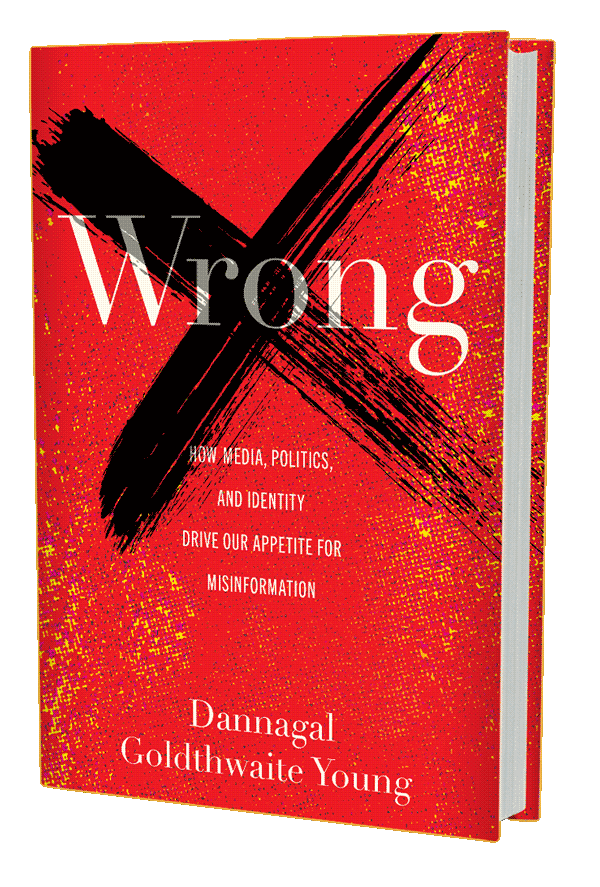
Why are so many of us wrong about so much? From COVID-19 to climate change to the results of elections, millions of Americans believe things that are simply not true―and act based on these misperceptions. In Wrong: How Media, Politics, and Identity Drive Our Appetite for Misinformation, expert in media and politics Dannagal Goldthwaite Young offers a comprehensive model that illustrates how political leaders and media organizations capitalize on our social and cultural identities to separate, enrage, and―ultimately―mobilize us. Through a process of identity distillation encouraged by public officials, journalists, political and social media, Americans’ political identities―how we think of ourselves as members of our political team―drive our belief in and demand for misinformation. It turns out that if being wrong allows us to comprehend the world, have control over it, or connect with our community, all in ways that serve our political team, then we don’t want to be right.
Over the past 40 years, lawmakers in America’s two major political parties have become more extreme in their positions on ideological issues. Voters from the two parties have become increasingly distinct and hostile to one another along the lines of race, religion, geography, and culture. In the process, these political identities have transformed into a useful but reductive label tied to what we look like, who we worship, where we live, and what we believe. Young offers a road map out of this chaotic morass, including demand-side solutions that reduce the bifurcation of American society and increase our information ecosystem’s accountability to empirical facts. By understanding the dynamics that encourage identity distillation, Wrong explains how to reverse this dangerous trend and strengthen American democracy in the process.
Dannagal Goldthwaite Young is a professor of communication and political science at the University of Delaware. Young is an award-winning scholar and teacher, a TED speaker, an improvisational comedian, and the author of Irony and Outrage: The Polarized Landscape of Rage, Fear, and Laughter in the United States. Her new book is Wrong: How Media, Politics, and Identity Drive Our Appetite for Misinformation.
Shermer and Young discuss:
- How do you know if you are wrong? Or that someone else is wrong?
- Did reason evolve for veridical perception or group identity?
- The 3 “Cs” of our needs: Comprehension, Control, Community
- Comprehension: to make sense of our world; Control: to control our world, Community: to be part of a social group
- Nonfalsifiable reasoning
- Why we have a two-party system and what we can do to make it more responsible
- Newt Gingrich, Contract with America
- Actively Open-Minded Thinking, Intuition, and Religion
-
Intellectual Humility & Mark Leary’s IH test:
- “I question my own opinions, positions, and viewpoints because they could be wrong”
- “I reconsider my opinions when presented with new evidence”
- “I recognize the value in opinions that are different from my own”
- “I accept that my beliefs and attitudes may be wrong”
- “In the face of conflicting evidence, I am open to changing my opinions”
- “I like finding out new information that differs from what I already think is true”
- Neil Postman in 1985: “When a television show is in process, it is very nearly impermissible to say ‘Let me think about that’ or ‘I don’t know’.”
-
1996: Daily Show, Fox News, MSNBC Matthew Levendusky:
“These programs contribute to polarization not by shifting the center of the ideological distribution, but rather by lengthening the tails (i.e., moving the polarized even further away from the center.”
- The rise of Newsmax, OAN, and even further right media
- Jonathan Haidt: “Why the Past 10 Years of American Life Have Been Uniquely Stupid”
- Echo Chambers vs. Identity Chambers
- The role of Alternative Media in truth telling and getting things wrong
- The role of Social Media in truth telling and getting things wrong
- Ways of knowing: do we seek truth through intuition or evidence?
- What is disinformation and who is worse, the Right or the Left?
- Trump and his lies
- Is Trump an existential threat to our democracy?
- What happened to conservatives and the Republican Party in the Trump era
- Do people vote their party or their values?
- Left lies: trans issues, race issues, woke progressivism
- Facts and values, science and morality
- Lies and disinformation about masks and vaccines
- Solutions to identity-driven wrongness.
JFK 60th Anniversary of the Assassination — Who Really Killed Camelot … and Why Do We Still Care?
A conversation with Warren Commission Assistant Counsel Burt W. Griffin, Case Closed author and Lee Harvey Oswald scholar Gerald Posner, and JFK conspiracy theory debunker Michel Gagné.
Burt W. Griffin, Warren Commission Assistant Counsel was the assistant counsel to the president’s commission on the assassination of President Kennedy (popularly known as the Warren Commission) and had primary responsibility for investigating and writing the section of the commission’s report (1964) on whether Jack Ruby was engaged in a conspiracy to assassinate either JFK, Lee Oswald, or both. He lives in Shaker Heights, Ohio.
Gerald Posner is an award-winning journalist who has written twelve books, including the Pulitzer Prize finalist Case Closed: Lee Harvey Oswald and the Assassination of JFK. His 2015 book, God’s Bankers, a two-hundred-year history of the finances of the Vatican, was an acclaimed New York Times bestseller. Posner has written for many national magazines and papers, including the New York Times, The New Yorker, Newsweek, and Time, and he has been a regular contributor to NBC, the History Channel, CNN, CBS, MSNBC, and FOX News. His other books include Killing the Dream: James Earl Ray and the Assassination of Martin Luther King, Jr.; Secrets of the Kingdom: The Inside Story of the Saudi-U.S. Connection; Mengele: The Complete Story; Hitler’s Children: Sons and Daughters of Third Reich Leaders; Warlords of Crime: Chinese Secret Societies — the New Mafia; and Why America Slept: The Failure to Prevent 9/11. He lives in Miami Beach with his wife, author Trisha Posner.
Michel Jacques Gagné teaches courses in critical thinking, political philosophy, philosophy of religion, and ethics in the Humanities Department of Champlain College Saint-Lambert, a junior college (CÉGEP) located near Montreal, Canada. He has an M.A. in History (Concordia University, Canada, 2005), with a thesis on civil rights protests in Northern Ireland during the 1960s, and undergraduate degrees in Education (McGill University, Canada, 1999) and History and Political Science (with joint-honors, McGill University, Canada, 1995). He has published articles in Skeptic, the National Post, the Encyclopedia of Religion and Violence, and is the author of Thinking Critically About the Kennedy Assassination: Debunking the Myths and Conspiracy. He is also the creator and host of the Paranoid Planet podcast, which discusses conspiracy theories and related phenomena. He resides with his wife and two children in Montreal, Canada.
Shermer, Griffin, Posner, and Gagné discuss:
- the nostalgic myth of “Camelot” and balancing the ledger of moral outrage
- Who was Lee Harvey Oswald and why did he kill Kennedy?
- Cuba, Castro, the Bay of Pigs debacle
- the CIA and why it is rational to be skeptical of their activities
- Paul Landis and the bullet Commission Exhibit 399
- Clint Hill’s account of what happened to the bullet
- Was the “magic bullet” pristine or predictably damaged?
- National Archives assassination files: 1% (4600) left… Why not release them all? What is the government hiding?
- Lee Harvey Oswald: any connection to the CIA? Was he a patsy?
- James Hosty and the FBI’s files on Oswald before he killed JFK: Nov. 12 he left a note at the Dallas FBI office that he would blow up the building if they didn’t leave his wife alone
- CIA and FBI coverups were to protect their own errors and incompetence
- LHO was unstable but isn’t that the type of person the CIA or mafia would engage as a “patsy” and “lone nut” to conduct the assassination?
- General Edwin Walker and Oswald’s attempt to assassinate him 6 months before JFK
- Jack Ruby’s motives to kill Oswald
- Bernard Weissman, conservative Jew in Dallas full of liberal Jews, took out an ad asking JFK questions — connection to Ruby?
- Maybe even Ruby didn’t know he was going to kill Oswald until the moment it happened, then the hindsight bias kicks in and he searches for some probable explanation
- Marina Oswald, Ruth Paine, Priscilla McMillan (Marina and Lee author)
- Castro: since the CIA tried to assassinate him, did he kill JFK first?
- the CIA hated Castro so would have loved to pin JFK’s death on him
- Oswald loved Castro, opposed the Bay of Pigs invasion
- Allan Dulles and how and why he was on the Warren Commission
- House Select Committee and revelations about the CIA
- Oliver Stone’s film JFK and its influence
- common themes in conspiracy theories like JFK, 9/11 Truth, Obama Birtherism, QAnon, rigged election and many others
- witness intimidation and alleged mysterious witness deaths
- planted evidence against Oswald
- tampering with evidence: faked oswald backyard photos
- autopsy, altered body between Dallas and Bethesda, swapped JFK’s brain, etc.
According to the Dallas Morning News reporter Hugh Aynesworth, who was at Dealey Plaza and saw the assassination:
TAGS: Castro, CIA, critical thinking, Cuba, debunking, evidence, FBI, General Edwin Walker, investigation, Jack Ruby, JFK assassination, JFK conspiracy theories, Lee Harvey Oswald, magic bulet, magic bullet, myths, politics, Science Salon, The Michael Shermer Show, The Warren CommissionI remember interviewing people that said they saw certain things; some did, some didn’t. Even then there were people making up things. I remember interviewing a young couple where the guy was telling me that he had seen this and he had seen that, and his wife said, “You didn’t see that! We were back in the parking lot when it happened!” Even then.
Bone Wars:
How Activists Are Targeting Teaching
How Activists Are Targeting Teaching
On March 5, 2023, NBC News, in conjunction with ProPublica,1 a nonprofit newsroom that investigates “abuses of power,” published what can only be described as a hit piece against the legendary paleoanthropologist Tim White, now a professor emeritus at the University of California, Berkeley. Other news outlets, such as the SFGATE and AOL, picked up the story.2, 3 The article revolved around Tim White’s use of a skeletal teaching collection that may contain Native American bones and teeth.
UC Berkeley has recently faced criticism for having Native American bone collections and, thus, they have changed their policies to ramp up repatriation efforts, abandoning their long-held view that teaching and research should be prioritized. Repatriation involves turning over bone and other artifacts to a Native American tribe that claims an ancestral connection to them.
Native American Graves Protection and Repatriation Act (NAGPRA) and similar state laws were intended to unite human remains, sacred objects, associated funerary objects, and items of cultural patrimony with their lineal descendants and culturally affiliated tribes. Teaching collections, which are of unknown origin and have been used to train the next generation of osteologists— from forensic anthropologists to orthopedic doctors—were not intended to be included in these laws. Yet, repatriation activists are attempting to claim these collections, and they are also attacking those who have used the collections. University administrators, including anthropologists working to repatriate remains, are helping this latest phase in the repatriation compromise. Repatriation activists have already successfully campaigned to remove the name of the first anthropology professor at UC Berkley, Alfred Kroeber, from the anthropology building.4 Tribes have also successfully claimed artifacts that have no affiliation to Native Americans, such as a 16th century Spanish breastplate.5

Alfred Kroeber was the first professor of anthropology at UC Berkley. In 2021, the university removed his name from the anthropology building. (Credit: Screenshot of UC Berkeley video by Roxanne Makasdjian and Clare Major)
Let us now return to Tim White. As one of the world’s most influential paleoanthropologists, he shaped the field on multiple levels. He discovered two species of over 4-million-yearold early human ancestors from Ethiopia: Ardipithecus kadabba and Ardipithecus ramidus. These two species are close to the base of the human evolutionary family tree. They are the best contenders for the first early humans, over a million years older than Lucy’s species, Australopithecus afarensis. White is also the author of the best-selling textbook, Human Osteology,6 a beautifully illustrated work that helps guide students in learning bone anatomy and contains fascinating case studies of forensics, human evolution, and archaeology. White revived research on cannibalism, and in 1992 put forth a rigorous method to ensure that sites where cannibalism was indeed practiced, are correctly assessed.7 CONTINUE READING THIS POST…
TAGS: activism, anthropology, archaeology, cancel culture, education, paleoanthropology, repatriation, research, Tim WhiteAdam Frank — Aliens: Real and Imagined
Everyone is curious about life in the Universe, UFOs and whether ET is out there. Over the course of his thirty-year career as an astrophysicist, Adam Frank has consistently been asked about the possibility of intelligent life in the universe. Are aliens real? Where are they? Why haven’t we found them? What happens if we do?
We’ve long been led to believe that astronomers spend every night searching the sky for extraterrestrials, but the truth is we have barely started looking. Not until now have we even known where to look or how. In The Little Book of Aliens, Frank, a leading researcher in the field, takes us on a journey to all that we know about the possibility of life outside planet Earth and shows us the cutting-edge science that has brought us to this unique moment in human history: the one where we go find out for ourselves.
In this small book with big stakes, Frank gives us a rundown of everything we need to know, from the scientific origins of the search for intelligent life, the Fermi Paradox, the Kardashev Scale, the James Webb Telescope, as well as UFOs and their conspiracy theories. Drawing from his own work and that of other scientists studying the possibility of alien life, he brings together the latest scientific thinking, data, ideas, and discoveries to equip us with the critical facts as we stand at what may be the last moment in human history where we still believe we are all alone. This book is about everything we do—and do not—know about life, intelligent or otherwise beyond Earth. In language that is engaging, entertaining and fun, The Little Book of Aliens provides a comprehensive first look at how close we are to finding out if others actually exist—and if they do, what they might be like.
Humankind is on the precipice of finding its neighbors. What comes next? No person is better suited to answer that question—and lead the search—than Adam Frank.
Adam Frank is the Helen F. and Fred H. Gowen Professor in the Department of Physics and Astronomy at the University of Rochester. A Carl Sagan Medal winner from the American Astronomical Society, he is also the author of Light of the Stars and was the science advisor for Marvel’s Doctor Strange. Frank is the principal investigator on NASA’s first grant to study technosignatures — signs of advanced civilizations on other worlds — and his current work focuses on the evolution of life and planets, the “Astrobiology of the Anthropocene,” and the long-term trajectory of civilizations He lives in Rochester, New York.
Shermer and Frank discuss:
- Origin of Life
- Drake Equation
- Fermi’s Paradox
- UFOs and UAPs
- Projects Sign, Blue Book, Cyclops, Grudge
- AATIP (Advanced Aerospace Threat Identification Program)
- Alien Autopsy film
- SETI and METI
- SETI optimists vs. pessimists
- Oumuamua and Avi Loeb’s claim that it was a technosignature
- Technosignatures here and there
- Biosignatures here and there
- Will aliens be biological or AI?
- Will aliens look anything like us? Convergent vs. contingent evolution
- Directionality and teleology in evolution of life
- Interstellar travel
- Dyson spheres, rings, and swarms
- Kardashev scale of civilizations
- Communicating with aliens: Arrival
- Aliens communicating with us: The Day the Earth Stood Still
- Order of the Dolphin: how to talk to aliens when we can’t even talk to dolphins
- Deities for Atheists, Skygods for Skeptics: aliens as gods and the search as religion
- Why aliens matter.
Ayaan Hirsi Ali Converted to Christianity
On November 11, 2023, my friend, colleague, and hero Ayaan Hirsi Ali released a statement explaining “Why I am Now a Christian”. What follows is my response, “Why I am Not a Christian,” and why in any case the alternative to theistic morality is not atheism but Enlightenment humanism—a cosmopolitan worldview that places supreme value on human and civil rights, individual autonomy and bodily integrity, free thought and free speech, the rule of law, and science and reason as the best tools for determining the truth about anything.
TAGS: atheism, belief, Christianity, civil rights, enlightenment humanism, free speech, morality, Science Salon, The Michael Shermer Show, truthRoe v. Wade—One Year Later
The Abortion Debate in Context
In the mid-1980s, demographer Ron Lesthaeghe staked his career on an undiscovered—and shocking—aspect of human societies he had been documenting.1 Birth rates had rapidly slowed in the most industrialized countries and were steadily slowing across developing countries. Family structures were also changing rapidly, including more people getting divorced and living alone or raising children alone.
Demographers and social scientists today2 know this phenomenon as the “second demographic transition.” But you certainly don’t need to be a demographer to see that family life is changing.
As women, the working class, and others have increasingly accessed occupational, educational, and political opportunities previously denied to them, more and more people are getting married later in life and having fewer children. Why? Because they are prioritizing career specialization over longer periods so as to be competitive in the growing global marketplace. More people in the world today are reaping the rewards of economic specialization than at any time in human history.
It is a fascinating transitional period. And it is, in significant part, a transitional period of family formation and of reproduction. Amongst other things, the ability for women to control their reproduction has been key to their success in higher education and high career achievement. The birth control pill was approved by the FDA in 1960, and this, along with many other factors, changed the demographics of colleges, universities, and the labor force forever.
It is in this complex and dynamic context that we find our culture embroiled in a national debate over abortion access.
The history of abortion legislation in the United States is a punitive and heavy-handed one. Every state in the U.S. had outlawed abortion by 1910, and, by 1967, 49 states classified commission of abortion as a felony crime.3 CONTINUE READING THIS POST…
TAGS: abortion, politics, women's rightsGarrett Graff — UFO: The Inside Story of the U.S. Government’s Search for Alien Life
For as long as we have looked to the skies, the question of whether life on Earth is the only life to exist has been at the core of the human experience, driving scientific debate and discovery, shaping spiritual belief, and prompting existential thought across borders and generations. And yet, the idea of extraterrestrial intelligence has been largely seen as a joke, banished to the realm of fantasy and conspiracy. Now, for the first time, the full story of our national obsession with UFOs — and the covert, decades-long search by scientists, the United States military, and the CIA for proof of alien life — is told by bestselling author and Pulitzer Prize finalist Garrett M. Graff in a deeply reported and researched history.
It begins in 1947, when two headline-making sightings of strange flying objects — the first near Mount Rainier, Washington, involving a pilot named Kenneth Arnold, and the second a ranch on the outskirts of a New Mexico town called Roswell — prompt the US Air Force’s newly formed Department of Defense to create a series of secret programs to determine how unidentified phenomena may pose a threat to national security. Over the next half-century, as the atomic age gives way to the space race and the Cold War, the search continues, bringing together an unexpected group of astronomers, military officials, civilian contactees, and true believers who bring us closer, then further, then closer again, to answering one of our most enduring questions: What exactly is out there?
Drawing from original archival research, declassified documents, and interviews with senior intelligence and military officials, Graff brings every moment of this extraordinary quest to life, transporting readers from secret military meetings and congressional hearings, where the validity of the search is debated, to the cluttered offices of UFOlogists and hoaxers determined to see the truth revealed, remote observatories where astronomers monitor the stars, and even the halls of the White House, where staffers and presidents alike eagerly await answers. Filled with twists and turns, and populated by an unforgettable cast of characters, UFO is a thrilling story of science, national security, the secrets of space, and the enduring mysteries of the universe.
Garrett M. Graff has spent nearly two decades covering politics, technology, and national security. The former editor of Politico and contributor to Wired and CNN, he’s written for publications from Esquire to Rolling Stone to the New York Times, and today serves as the director of the cyber initiative at the Aspen Institute. Graff is the author of multiple books, including the FBI history The Threat Matrix, Raven Rock, about the government’s Cold War Doomsday plans, and the New York Times bestsellers The Only Plane in the Sky and Watergate: A New History, which was a finalist for the Pulitzer Prize in History.
Shermer and Graff discuss:
- government security and secrets
- How long can secrets be kept?
- what the government is really hiding
- cultural context for UFO flaps and waves of sightings
- why David Grusch’s testimony about a secret government program to recover crashed UFOs could be accurate but still not represent alien contact
- Kenneth Arnold and the first flying saucer
- Roswell and why we know that it wasn’t aliens
- The Fermi Paradox: “Where is everybody?”
- why 90-95% of all UFO sightings are explainable
- anomalies and how to treat them
- SETI and the search for aliens out there
- Avi Loeb and the Galileo Project
- President Clinton’s investigation into UFOs
- UFOs as a modern myth or religion
- Will the UFO phenomena ever be resolved?
The Real Value of Diversity
The class followed its usual script. The professor took center stage, exposing the deep racism, sexism, and homophobia of a previous generation, and like well-rehearsed actors we students assumed our roles as moral arbiters in a semester-long show trial. This was a course called “Darwin and Natural Selection” and we were intrepid voyagers on the Beagle 2.0 heroically exposing the bigotry of a man born in 1809.
I’m an undergraduate English major at Dartmouth College. Whether it’s Lewis and Clark in my course on 19th century American history or Michael Pollan in my “Garden Politics” class, the focus is unchanged. The same reliable arguments about the author’s “racial commodification” or Clark’s “masculinely imposed pollution” secure an incontestable stamp of approval and get placed in the recycle bin for next class. These opinions are dissent-proof; simple confirmations of what we already know.
Last year’s annual review1 of Dartmouth students’ political leanings found that 91 percent of the class (myself included) held unfavorable views of Donald Trump against just three percent favorable. Only eight percent of the student body identified as “somewhat” or “very” conservative, one percent reporting “very,” while 17 percent reported moderate views and 73 percent “somewhat” or “very” (myself included) liberal views. This orthodoxy is enforced by a high degree of self-censorship. A survey2 of 45,000 students at over 200 colleges by the Foundation for Individual Rights and Expression (FIRE) found that more than eight out of 10 reported being afraid to express their true beliefs at least some of the time and nearly six out of 10 said that they would “hesitate to publicly disagree with a professor.” Even among the almost entirely liberal faculty (as much as 95 percent in the social sciences3), more than a third of professors report4 self-censoring to avoid running afoul of the Diversity, Equity, and Inclusion (DEI) bureaucracy on college campuses. This is compared to nine percent at the height of the red scare.5 When it comes to views on race, sex, and gender identity, we are all in the majority; and as Mark Twain advised, “Whenever you find yourself on the side of the majority, it is time to pause and reflect.” CONTINUE READING THIS POST…
Yascha Mounk — Identity Politics and its Discontents
For much of history, societies have violently oppressed ethnic, religious, and sexual minorities. It is no surprise that many who passionately believe in social justice came to believe that members of marginalized groups need to take pride in their identity to resist injustice.
But over the past decades, a healthy appreciation for the culture and heritage of minority groups has transformed into a counterproductive obsession with group identity in all its forms. A new ideology aiming to place each person’s matrix of identities at the center of social, cultural, and political life has quickly become highly influential. It stifles discourse, vilifies mutual influence as cultural appropriation, denies that members of different groups can truly understand one another, and insists that the way governments treat their citizens should depend on the color of their skin.
This, Yascha Mounk argues, is the identity trap. Though those who battle for these ideas are full of good intentions, they will ultimately make it harder to achieve progress toward the genuine equality we desperately need. Mounk has built his acclaimed scholarly career on being one of the first to warn of the risks right-wing populists pose to American democracy. But, he shows, those on the left and center who are stuck in the identity trap are now inadvertent allies to the MAGA movement.
In The Identity Trap, Mounk provides the most ambitious and comprehensive account to date of the origins, consequences, and limitations of so-called “wokeness.” He is the first to show how postmodernism, postcolonialism, and critical race theory forged the “identity synthesis” that conquered many college campuses by 2010. He lays out how a relatively marginal set of ideas came to gain tremendous influence in business, media, and government by 2020. He makes a nuanced philosophical case for why the application of these ideas to areas from education to public policy is proving to be so deeply counterproductive—and why universal, humanist values can best serve the vital goal of true equality. In explaining the huge political and cultural transformations of the past decade, The Identity Trap provides truth and clarity where they are needed most.
Yascha Mounk is a writer and academic known for his work on the rise of populism and the crisis of liberal democracy. Born in Germany to Polish parents, Mounk received his BA in history from Trinity College Cambridge, and his PhD in government from Harvard University. He is a professor of the practice of international affairs at Johns Hopkins University, the founder of the digital magazine Persuasion, a contributing editor at The Atlantic, a senior fellow at the Council on Foreign Relations, and he has written for the New York Times, the Wall Street Journal, Foreign Affairs, and Slate. He is the author of numerous books, including: The Great Experiment: Why Diverse Democracies Fall Apart and How They Can Endure (featured on President Barack Obama’s summer reading list), The People vs. Democracy: Why Our Freedom is in Danger and How to Save It, Stranger in My Own Country: A Jewish Family in Modern Germany, The Age of Responsibility: Luck, Choice and the Welfare State and The Identity Trap: A Story of Ideas and Power in our Time. His podcast is called The Good Fight.
Shermer and Mounk discuss:
- Israel, Hamas, Palestine
- Why the Jews?
- Progressive Left failure to denounce Hamas terrorists
- Why students & student groups are pro-Palestinian and anti-Israel
- The rise of anti-Semitism in recent years
- Proximate causes of anti-Semitism
- Ultimate causes of anti-Semitism
- What is the identity synthesis and trap?
- The rejection of the civil rights movement and the rise of critical race theory
- Diversity, Equity and Inclusion
- identity politics
- Overt racism vs. systemic racism
- Liberalism vs. illiberalism
- What is progressive?
- What is woke?
- What are the true motives of woke progressive leftists?
- How widespread is the problem of woke ideology?
- Biden, Trump and the 2024 election
- Could there be another Civil War?
- What happened to conservatives and the Republican Party in the Trump era?
- What should we do personally and politically about the Identity Trap?
Stop Bleeding and Start Leading:
Dispelling Teaching’s Greatest Myth is the First Step Towards Educational Reform
Dispelling Teaching’s Greatest Myth is the First Step Towards Educational Reform
2023 was a budget-writing year for the Indiana General Assembly, which consists of 100 House Members and 50 Senators, and on the first day of the session I found myself sitting outside of the Senate chambers waiting for a meeting with the budget chairperson for the senate, Senator Ryan Mishler. A few minutes before the meeting, Sanjay Sarma, the former vice-president of MIT’s Open Learning Department (and currently the president of the Asia School of Business in Malaysia) told me something to the effect of, “I’m going to let you lead the meeting, we are all behind you.”
This meeting, plus a few others with senate leaders, led to a significant increase in funding for a new and innovative type of teacher-education program. I am confident it will enhance the experience of thousands of students and begin a process of turning classroom teaching into a sustainable and respected profession.

Buy print edition
Buy digital edition
Subscribe to print edition
Subscribe to digital edition
Download our app
The program itself, and a succinct and workable plan for education reform are outlined in the “Education Matters” edition of Skeptic. That issue also includes articles on the Uses and Abuses of Testing, Resistance to Evidence Use in Education Reform, and why Schools of Education themselves need to be reformed.
However, none of the concrete reforms in that plan can begin until the greatest myth in teaching is dispelled: educational reform will not be created out of sympathy for teachers. Instead, reform must be built upon new ideas presented by teachers. Teachers themselves need to stop bleeding and start leading. And the place to start is by dispelling existing myths. CONTINUE READING THIS POST…
TAGS: bureaucracies, education, education policy, educational reform, funding, leadership, professional development, teachingIsrael-Hamas Study (IHS)
Data for the Skeptic Research Center’s Israel-Hamas study was collected on October 16th, 2023 using the survey company 1Q.
The total sample size for the study was 1567 American adults. The sample skews very slightly toward women (52.3% of participants), most participants (85.8%) have a high school or a college degree and 65.5% identify as white. Just under a third (30.2%) of the sample identify as Democrats, and about a quarter (24.5%) identify as Republicans with the remainder identifying as either politically non-affiliated (26.6%) or “other” (18.7%).
Survey questions inquired about a number of topics related to the 2023 Israel-Hamas War. In the survey, we assessed both peoples’ attitudes towards the war as well as their accuracy about pertinent regional and cultural facts. We will be regularly releasing charts depicting our findings.
For further sample details, please download the supplemental file.
REPORT (IHS-001)
The Israel-Hamas War
First report in the Israel-Hamas Study (IHS)
After decades of back-and-forth conflicts, with Israel generally getting the upper hand but failing to stem the growth of terrorist cells in Palestine, on October 7th, 2023, at around 6 AM, Hamas militants launched a sneak attack, murdering over 1,400 Israelis (including children), injuring over 4,500, and taking over 200 Israelis as hostages (Hutchinson, 2023). In response to these attacks, the Israeli government formally declared war against Hamas. The war has led to the estimated deaths of over 10,000 Gazans. Because this new escalation to war is barely a month old, we should expect these statistics to be revised and updated over time; we are amidst the fog of war. Nevertheless, it is clear that relations between Israel and Palestine have reached a new low, and that war is underway. In light of this, in this report, we ask: What do Americans think about this conflict and how accurate are they about the known facts?
Suggested Citation: McCaffree, K., & Saide, A. (2023). The Israel-Hamas War. Skeptic Research Center, IHS-001.
Dan Ariely — What Makes Rational People Believe Irrational Things?
Misinformation affects all of us on a daily basis—from social media to larger political challenges, from casual conversations in supermarkets, to even our closest relationships. While we recognize the dangers that misinformation poses, the problem is complex—far beyond what policing social media alone can achieve—and too often our limited solutions are shaped by partisan politics and individual interpretations of truth.
In Misbelief, preeminent social scientist Dan Ariely argues that to understand the irrational appeal of misinformation, we must first understand the behavior of “misbelief”—the psychological and social journey that leads people to mistrust accepted truths, entertain alternative facts, and even embrace full-blown conspiracy theories. Misinformation, it turns out, appeals to something innate in all of us—on the right and the left—and it is only by understanding this psychology that we can blunt its effects. Grounded in years of study as well as Ariely’s own experience as a target of disinformation, Misbelief is an eye-opening and comprehensive analysis of the psychological drivers that cause otherwise rational people to adopt deeply irrational beliefs. Utilizing the latest research, Ariely reveals the key elements—emotional, cognitive, personality, and social—that drive people down the funnel of false information and mistrust, showing how under the right circumstances, anyone can become a misbeliever.
Yet Ariely also offers hope. Even as advanced artificial intelligence has become capable of generating convincing fake news stories at an unprecedented scale, he shows that awareness of these forces fueling misbelief make us, as individuals and as a society, more resilient to its allure. Combating misbelief requires a strategy rooted not in conflict, but in empathy. The sooner we recognize that misbelief is above all else a human problem, the sooner we can become the solution ourselves.
Dan Ariely is the bestselling author of Predictably Irrational, The Upside of Irrationality, and The (Honest) Truth About Dishonesty. He is the James B. Duke Professor of Psychology and Behavioral Economics at Duke University and is the founder of the Center for Advanced Hindsight. His work has been featured in the New York Times, the Wall Street Journal, the Washington Post, the Boston Globe, and elsewhere. He lives in North Carolina with his family.
Shermer and Ariely discuss:
- What is disinformation and what should we do about it?
- How do we know what is true and what to believe?
- virtue signaling one’s tribe as a misbelief factor
- the role of complex stories in misbelief
- emotions, personality, temperament, trust, politics, and social aspects of belief and misbelief
- the funnel of belief
- social proof and the influence of others on our beliefs
- a COVID-23 pandemic
- social media companies responsibility for disinformation
- What would it take to change your mind?

